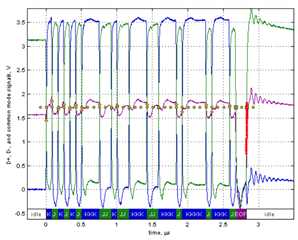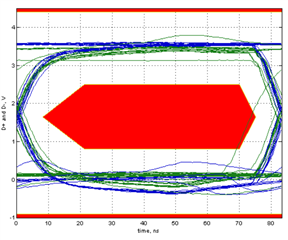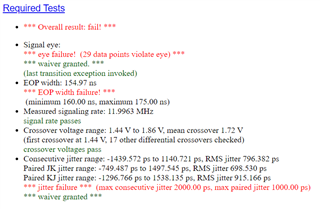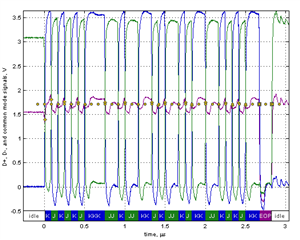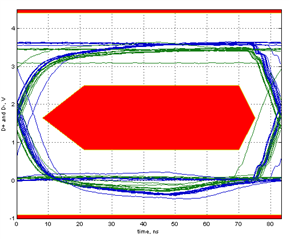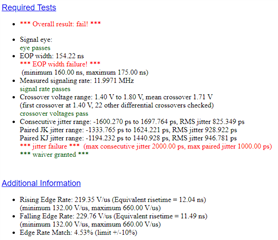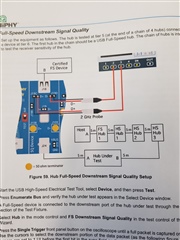Other Parts Discussed in Thread: TUSB8044
Hi!
I performed the "official" Signal Quality measurement with the LeCroy QualiPHY Test Rig and Oscilloscope and received the following results in the pictures below.
The following problems occured:
- Eye Diagram is not fulfilled. It appears that the last rising edge (also part of EOP?) cuts through it
- End-of-Package Requirement not fulfilled. EOP is too short
- Some problem with Jitter requirements
In my test setup, there's really only the HUB Chip and the connectors required for the test (for testing purpose i removed all CM-Chokes and protection circuitry from the USB lines, but no change).
I also routed two different PCBs with this Hub Chip, both appear to have the same problem.
There's no problem / failure in the High-Speed Signal quality measurements.
I played around a lot with my setup (various cabel lengths, various Full-Speed devices, etc.) but nothing seems to have an effect on these measurement parameters.
What could be the reason for this behavior? How can i improve it?
Thanks and best regards,
Gregor
Pictures:
